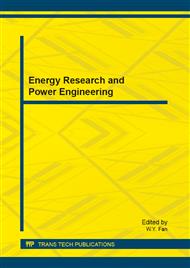[1]
Z. Jing and Huei Peng, Range Policy of Adaptive Cruise Control Vehicles for Improved Flow Stability and String Stability, IEEE Trans. on. Intelligent Transportation Systems, Vol. 6, No. 2, June, 2005, pp.229-237.
DOI: 10.1109/tits.2005.848359
Google Scholar
[2]
Antoine Tordeux, Sylvain Lassarre and Michel Roussignol, An adaptive time gap car-following mode, Transportation Reaearch Part B, Vol. 44, no. 8-9, September–November , 2010, pp.1115-1131.
DOI: 10.1016/j.trb.2009.12.018
Google Scholar
[3]
S. Li, J. Wang, K. Li, X. Lian, H. Ukawa, D. Bai, Modeling and Verification of Heavy-duty Truck Drivers'Car-Following Charactersitics, International Journal of Automotive Technology, Vol. 11, No. 1, January, 2010, pp.81-87.
DOI: 10.1007/s12239-010-0011-7
Google Scholar
[4]
X. M. Zhao and Z. Y. Gao, A new car-following model: full velocity and acceleration difference model, Euro. Phys. J. B, 47, September, 2005, pp.145-150.
DOI: 10.1140/epjb/e2005-00304-3
Google Scholar
[5]
A. T. Bahill and J. D. McDonald, Frequency limitations and optimal step size for the two-point central difference derivative algorithm with applications to human eye movement data, IEEE Trans. Biomed. Eng, vol. BME-30, no. 3, Mar. 1983, pp.191-194.
DOI: 10.1109/tbme.1983.325108
Google Scholar
[6]
Bruce, L.M., Li, J., Wavelets for computationally efficient hyperspectral derivative analysis, IEEE Trans on geoscience and remote sensing, Vol. 39, no. 7, July 2001, pp.1540-1546.
DOI: 10.1109/36.934085
Google Scholar
[7]
Poznyak, A.S., Sanchez, E. Palma, O. and Wen Yu., Robust Asymptotic Neuro Observer with Time Delay Term, in Proc. IEEE ISIC 2000, Rio. Patras. Greece, 2000, pp.19-24.
DOI: 10.1109/isic.2000.882893
Google Scholar
[8]
P. Neveux, E. Blanco, and G. Thomas, Robust Filtering for linear time-invariant continuous systems, IEEE Trans. on Signal Processing, Vol. 55, No. 10, Oct. 2007, pp.4752-4757.
DOI: 10.1109/tsp.2007.896104
Google Scholar
[9]
Han Jingqing, Wang Wei, Nonlinear tracking-differentiator, J. Systems Sci. Math. Sci., Vol. 14, no. 2, April, 1994, pp.177-183.
Google Scholar
[10]
X. Wang, Z. Chen, Z. Yuan., Design and Analysis for New Discrete Tracking- differentiators, Applied Mathematic Transactions for University, Series B, Vol. 18, no. 2, April, 2003, pp.214-222.
Google Scholar
[11]
Darbha, Swaroop and Rajagopal, K. R. Intelligent cruise control systems and traffic flow stability, Transportation Research Part C: Emerging Technologies, Vol. 7, no. 6, December, 1999, pp.329-352.
DOI: 10.1016/s0968-090x(99)00024-8
Google Scholar
[12]
Ferrara, A.; Vecchio, C., Sliding Mode Control for Automatic Driving of a Platoon of Vehicles, Proceedings of the 2006 International Workshop on Variable Structure Systems, Alghero, Italy, June, 5-7, 2006, pp.262-267.
DOI: 10.1109/vss.2006.1644528
Google Scholar
[13]
Michael Christopher Drew., Coordinated Adaptive Cruise Control: Design and Simulation, the dissertation for the degree of Masters, University of California, (2002).
Google Scholar
[14]
Y. K. Yang, Z. M. Zhu and Y. X. Huang, Constructing Estimate Mode for Maneuvering Target Tracking by numerical differentiation: principle and applications, Acta Electronica Sinica, Vol. 30, no. 12, December, 2002, pp.1759-1762, Dec.
Google Scholar
[15]
C. Chen, C. Z. Wang and J. Q. Han, A new approach to estimate the moving parameters for maneuvering objects, Journal of Astronautics, vol. 16, No. 1, January, 1995, pp.30-34.
Google Scholar
[16]
Z. G. Li. Study on vehicle longitudinal distance control in intelligent transportation system, Proceeding 2010 International Conference on Mechanic Automation and Control Engineering, 2010, pp.4131-4134.
DOI: 10.1109/mace.2010.5535491
Google Scholar
[17]
X. Y. Lu and K.J. Hedrick, 2000, Integral filters from a new viewpoint and their application in nonlinear control, Proc. IEEE Conference on Control Application, Sept. 25-27, 2000, Anchorage, Alaska.
DOI: 10.1109/cca.2000.897474
Google Scholar
[18]
X. P. Fang, Hung. A. Pham and Minoru Kobayashi, PD controller for car-following models based on real data, Proceeding of the 1st Human-Centered Transportation Simulation conference, Iowa city, Iowa, USA. November, 4-7, 2001, pp.1-6.
Google Scholar


